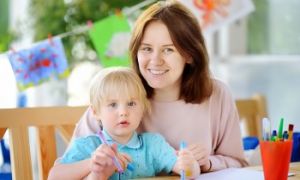Early childhood is a busy time – there are so many new objects to look at and touch, sensations to experience and activities to explore. Not surprisingly then, it is common for children to occasionally have trouble paying attention. However, adding a sensory component or enhancing the existing sensory features of an activity can help promote attention and engagement. The following article provides strategies and activity ideas for auditory, visual, tactile, oral, and movement sensory stimulation.
Understand The Requirements Of Children
Not all children respond in the same way to sensory inputs; the same input may appear too intense to one child or too mild to another. The overstimulated child may appear easily distracted by noise, light, or touch or may avoid busy situations, loud noises and certain textures of foods. The under-stimulated child on the other hand may appear hyper-active crashing, jumping and finding it difficult to sit still or chew and bite non-food items.
So when using sensory strategies to promote attention, educators first need to understand which children require what type of and how much sensory stimulation. For example, children with an auditory style of learning will respond better to auditory rather than visual stimuli. Again, children who become distracted or overwhelmed by certain sensory experiences may need less sensory input to pay attention. However, many children are better able to attend to and participate when tasks appeal to the senses. They need more sensory input to regulate themselves and stay focused.
Auditory Sensory Strategies
Some children need stronger auditory inputs to pay attention. Often these children miss important details or instructions when they are verbally presented in class or may not respond when the teacher calls on them. Many of them have ways to generate their own noise – like by humming, singing, tapping, or making strange noises - to stay focused on a task. Such children can be supported to engage better by following strategies:
- Having the child repeat instructions or important information back to you
- Use your body to build sound into learning like by clapping out syllables of words, and stomping feet while counting by tens.
- Making up songs or rhymes to focus attention on a task; so instead of telling a child to get dressed and then brush their teeth, make up a song about routines – rhymes and songs will not only work better to catch their attention but also help them remember the routine better
- Including breaks throughout the day with catchy tunes, songs or musical toys.
- Exposure to games and apps that teach concepts using music and sound.
Visual Sensory Strategies
Some children may miss instructions that are written on the page or barely notice the visual details in their surroundings. When required to focus on visual activities like reading, such children tend to lose interest. A few visual sensory strategies to boost attention could be:
- Using learning materials in bright colours and bold patterns.
- Working or playing on a brightly coloured surface or light table
- Highlighting with colour to draw attention to written instructions or details.
- Making use of visual cues like sticker charts, picture schedules and checklists, during routines and transitions.
- Using learning methods that incorporate visual discrimination like sorting, comparing, differentiating through word searches, hidden picture pages, colour by number pages, word scrambles and such activities.
- Allowing sensory breaks with visual activities like sensory bottles or seek and find bottles filled with dry rice and small objects to find
Tactile Sensory Strategies
Children with a tactile style of intelligence process information best when it is mediated through touch and texture. Such children can be supported to pay attention by:
- Using manipulatives and hands-on materials for play and learning rather than pencil and paper; for example, these children can be encouraged to build with Legos when learning math concepts or string beads when doing patterns. Also instead of having them write on worksheets, see if it is possible to adapt the tasks into a cut-and-paste format.
- Combining learning materials with tactile bins, like digging for math flash cards or letter magnets in a bin filled with sand or dry rice.
- Adapting learning materials to incorporate texture; children can be shown how to trace over text using puffy paint or a hot glue gun. Another idea is to cut letters and numbers out of textured paper or sandpaper so that children can enjoy handling the cut-outs and learn in the process.
- Allowing children to hold in their hands or play with fidget toys when they have to listen or pay attention for extended periods of time.
- Use special tools, if budget allows, that combine writing, drawing or colouring with tactile sensory inputs; for example, a textured pen that vibrates when written or drawn with – such pens can come with pencil, and crayon attachments.
- Allowing children to take tactile sensory breaks that provide deep pressure through bear hugs, smushes with pillows or beanbag chairs; they can also be allowed to play with tactile materials like play dough and shaving cream.
Strategies That Incorporate Movement
Young children are just not meant to sit in one place for lengthy periods of time. It is natural for them to move around and use their body in different ways. But all this does not mean that children cannot be expected to engage with focused work. Some ways of using movement to engage their attention can be by:
- Offering opportunities to move around for example to do different types of activities at different places. This can be facilitated by designing learning areas across the room like a quiet nook for solitary reading, a table for construction activity and space for role play in a group.
- Allowing frequent changes in position when completing a task like while lying on the floor with a clipboard or sitting on a beanbag chair; if at the end of a particularly long day, they seem unable to focus, let them to have some fun as they work, lying under the table with their work taped to the underside of the table!
- Including different seating options that provide movements such as inflatable seat cushions, rocking chairs and ball chairs among others.
- incorporating movement into learning activities; for example, math fact flashcards can be set out on the floor and children are asked to run, skip, jump, or gallop to pick one up when giving an answer. body movements like clapping, and snapping fingers can again be used to help children remember letter sounds. To engage children with literacy activities, you can tape sight word cards at various heights on the wall and have the child jump to touch them as you read them one by one.
- Including movement breaks regularly throughout the day and during transitions; these can be through vestibular activities like swinging, rolling, balancing and rocking which help children to build their sense of balance and feel centred. At other times, encourage children to climb playground equipment, jump rope, stomp on leaves or move against resistance by pushing furniture. These are proprioceptive activities that help children coordinate their muscles and refine the use of force. Indeed many children also feel calmer after pushing and pulling against resistance.
Olfactory And Oral Sensory Strategies
Certain smells, tastes, and textures have been associated with more attentive behaviour in children. Then again there may be some children who focus better when their sense of smell and taste are engaged. Some ways of using oral and olfactory input might be by:
- Using writing tools like pens, crayons or pencils with chewable or scented tips; there are also wearables like chewable gem necklaces that make it easy for children to get the oral sensory input as they are working on a task that requires focus.
- Introducing foods and beverages with certain tastes and textures; some children find it easier to calm down and focus when eating chewy snacks and treats like bagels, gum, and fruit leathers. Sucking against resistance can also help some children organize themselves or attend to the task at hand; have them suck a thicker liquid like a smoothie through a straw or drink out of a sports bottle. If children appear sluggish or tired, encourage them to try orange wedges, grapefruit, or lemonade since crunchy, cold, and citrusy snacks and drinks can be refreshing and energizing.
- Incorporating certain smells in learning activities; children partial to the olfactory system of information processing can feel more alert when exposed to smells like peppermint while others like lavender usually help them feel calmer. However, before using essential oils or scents in the room, ensure that no one is susceptible to allergies.
For children who require more sensory input, such sensory strategies can help to remain focused and attentive. The activities and strategies will support children to build attention skills or accommodate for struggles with attention so that they can become safe and active learners in all environments.
References:
- Paying Attention - 30 Sensory Strategies, The Inspired Educator
- Sensory Processing, Paediatric Occupational Therapy



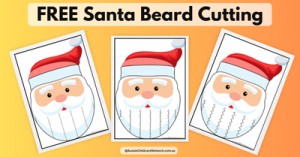



 Open ended questions cannot be responded to with one word answers such as yes or no. These types of questions enables a child to provide
Open ended questions cannot be responded to with one word answers such as yes or no. These types of questions enables a child to provide During your child’s preschool years, an important milestone begins to emerge. This is the development of pre-writing skills. Pre-writing skills are used to encourage, develop
During your child’s preschool years, an important milestone begins to emerge. This is the development of pre-writing skills. Pre-writing skills are used to encourage, develop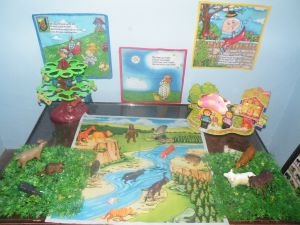 Open ended materials enables children to play freely. They are objects that have no rules to follow, use or function. Raw materials that can be
Open ended materials enables children to play freely. They are objects that have no rules to follow, use or function. Raw materials that can be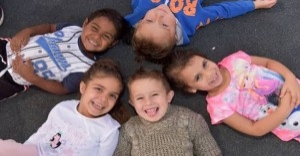 An Acknowledgment of the Country is a way of showing respect for the Traditional Owners and can be given by both non-Indigenous people and Aboriginal
An Acknowledgment of the Country is a way of showing respect for the Traditional Owners and can be given by both non-Indigenous people and Aboriginal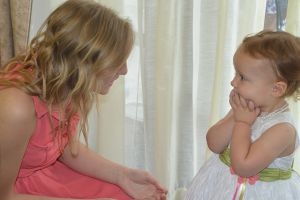 Language plays an important role in a child’s development. It enables a child to communicate effectively with their family, learn at school, socialize with friends,
Language plays an important role in a child’s development. It enables a child to communicate effectively with their family, learn at school, socialize with friends, Like adults, children have to deal with their own stress in life. Moving house, starting a new school, preparing for a new sibling - these are
Like adults, children have to deal with their own stress in life. Moving house, starting a new school, preparing for a new sibling - these are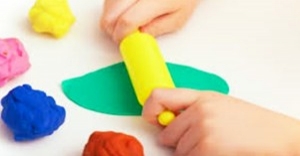 Playdough is such a versatile material. It provides numerous benefits to children as they manipulate it, it is safe and soothing and provides children with
Playdough is such a versatile material. It provides numerous benefits to children as they manipulate it, it is safe and soothing and provides children with Teaching children about sustainability enables them to appreciate and respect the natural environment. Early childhood services can provide meaningful hand on learning experiences in order
Teaching children about sustainability enables them to appreciate and respect the natural environment. Early childhood services can provide meaningful hand on learning experiences in order Recycling is an important concept that teaches children to care for the environment. It encourages children to be responsible and show a growing appreciating for
Recycling is an important concept that teaches children to care for the environment. It encourages children to be responsible and show a growing appreciating for When children apply paint to paper, glue things together, or pound a lump of clay, they experiment with colour, shape design and texture.
When children apply paint to paper, glue things together, or pound a lump of clay, they experiment with colour, shape design and texture.
